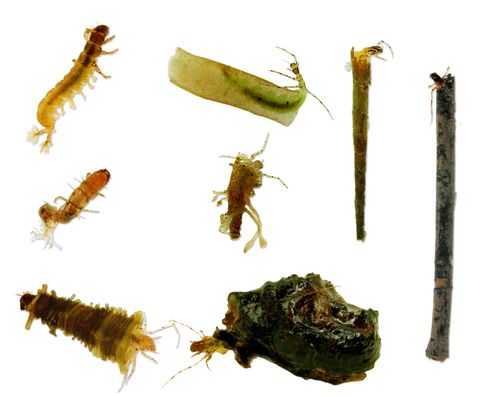Waterway and catchment health resources
Landscapes contain a network of waterways across Victoria and freshwater is an essential link providing water for our community needs and maintaining natural ecosystems.
Link to organisations involved in managing waterway and catchment health
Links to regional water quality reports
Natureblitz
The North Central CMA's NatureBlitz App is a citizen science monitoring tool that allows the community to collect important information about our region's biodiversity. Free on Play Store and App Store.
Census
The Melbourne Water Waterbug, Playtpus and Frog censuses involve community members in surveying these important and often cryptic creatures. The data collected through the programs are used to help manage and raise awareness of Melbourne’s waterway health issues.
Melbourne Water Waterbug Census
Melbourne Water Platypus Census
Melbourne Water Frog Census App
Other Apps that the citizen scientist can freely download include:
On the subject of waterbugs
Agreed Level Taxonomy (ALT) is a water quality assessment procedure that evaluates seasonal aquatic macro-invertebrate (waterbug) diversity and abundance.
ALT uses features that are visible to the naked eye to identify macro-invertebrates. The animals are identified alive rather than being preserved. This means that features which are lost in ethanol preservation -like colour and movement - can be used to identify the animals. ALT identifications result in data sets of mixed taxonomic levels, some at genus or species, and others at higher levels. ALT methods are documented on the Waterbug website.
Each aquatic invertebrate is given an ALT SIGNAL2 score depending on their sensitivity to pollutants. SIGNAL stands for Stream Invertebrate Grade Number - Average Level. In 1994, a new version of this method, known as SIGNAL2, was developed and is available on the Federal Government website. By knowing the SIGNAL2 grade for every family, the SIGNAL2 score of a site, and therefore its health, can be assessed. For example a site that has abundant diversity and many sensitive aquatic invertebrates will have a high ALT SIGNAL2 score.
To calculate an ALT SIGNAL2 score for a site:
Step 1. Collect, sort and identify the creatures found at the site
Step 2. Calculate the sum of the individual ALT SIGNAL2 grades
Step 3. Divide the sum of the individual ALT SIGNAL2 grades by the number of different invertebrates collected to calculate the ALT SIGNAL2 score.
A guide for interpreting water health according to the SIGNAL score of a site is given in this table
SIGNAL score ratings
| Higher than 6 | Healthy habitat |
| Between 5 and 6 | Mild pollution |
| Between 4 and 5 | Moderate pollution |
| Less than 4 | Severe pollution |
These ratings were originally developed for very “normal” freshwater streams and rivers, and do not work as well for wetlands or lakes.


